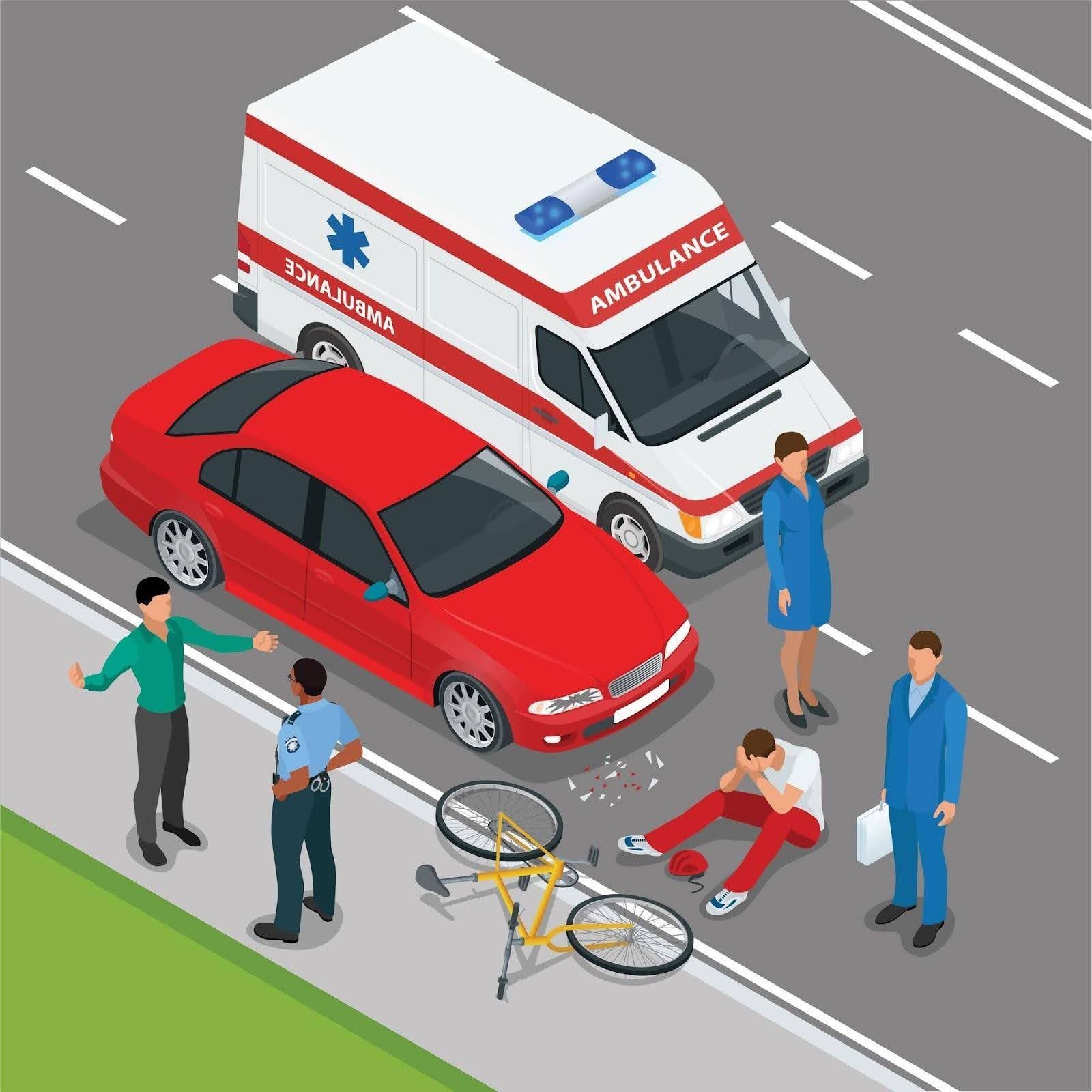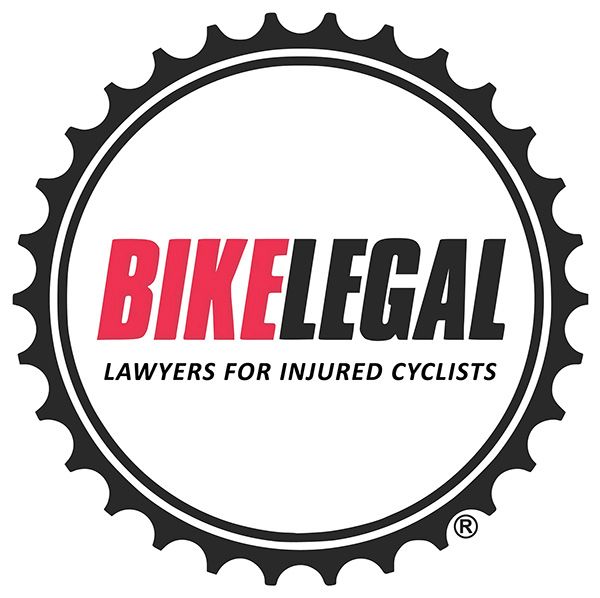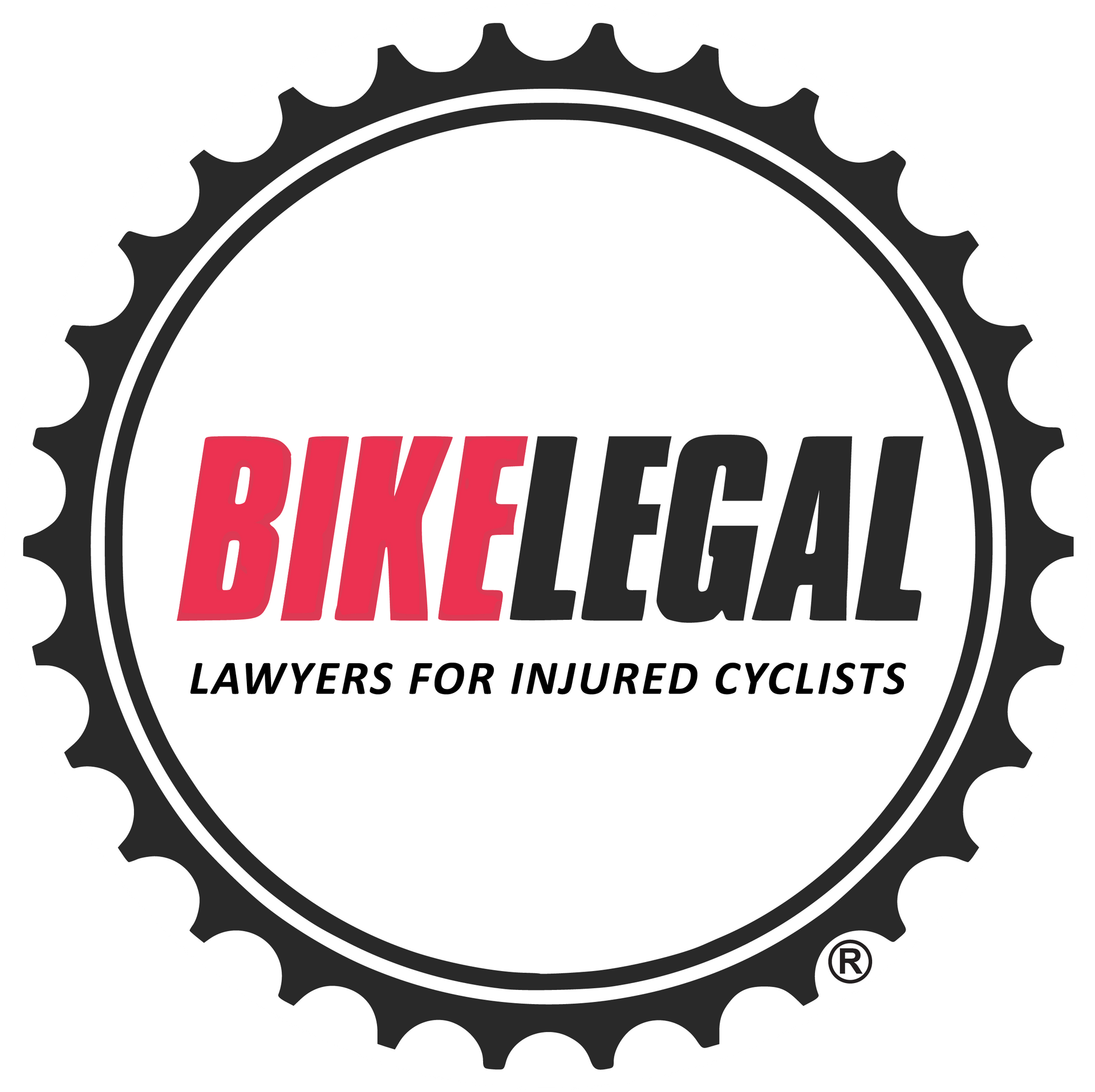Iowa Bicycle Laws Explained: Rules, Safety, and What Cyclists Need to Know
Follow us on
social media!
Iowa bicycle laws are essential for keeping cyclists and motorists safe on the road. As biking becomes more popular in cities like Des Moines and Cedar Rapids, understanding the state’s bike laws can help prevent accidents and ensure everyone shares the road responsibly.
This guide will cover Iowa’s bicycle regulations and provide key insights to help riders and motorists share the road safely.
Table Of Contents
Iowa Bicycle Laws: Rules of the Road
Iowa’s bicycle laws are designed to protect cyclists. Understanding these laws can prevent accidents and help you ride confidently, especially as more cyclists join the roadways across the state.
Rules and Responsibilities of Cyclists in Iowa:
According to Section §321.234, a person riding a bicycle on a roadway has the same rights and responsibilities as a vehicle driver, except when specific laws don’t apply naturally. While bicycles are human-powered and thus not technically defined as “vehicles,” cyclists are expected to follow traffic laws that ensure safe operation alongside motor vehicles.
- Seating: Cyclists must ride on a permanent, regular seat.
- Passenger limit: Only the number of persons for which the bicycle is designed may be carried.
- Interstate restriction (§321.285): Bicycles (or any vehicles) unable to reach 40 mph are prohibited from using interstate highways.
- Parade exemption: Bicycles in authorized parades are exempt from highway rules.
Roadway Positioning:
Bicyclists must ride on the right side of the roadway. When the road has designated lanes, cyclists must use the right lane. On roads without marked lanes, riders should stay as close to the right as is practicable but not necessarily as close as possible. Bicycles (or any vehicle) must keep to the right side of the roadway according to §321.297 unless:
- Overtaking: When passing another vehicle moving in the same direction.
- Avoiding an obstruction: If an obstruction requires driving left of the center, yielding to oncoming traffic is mandatory.
- Traveling on a three-lane roadway: Follow applicable rules on roads with three marked lanes.
- On one-way roads: As per Iowa bike lane laws, all lanes are intended to travel in the same direction.
Riding Two-Abreast/Side by Side:
Cyclists are permitted to ride two abreast but should remain within a single lane on laned roadways and must not obstruct traffic (1978 Code §23-69).
Cyclist Signaling Requirements in Iowa:
Proper hand signaling helps ensure safe and predictable road interactions. Drivers and cyclists must follow specific guidelines when turning, stopping, or slowing down, especially near curves or areas with limited visibility.
- When turning on roads with speed limits of 45 mph or less, give a continuous hand signal for at least 100 feet before the turn. On roads with higher speed limits, extend the signal to 300 feet in advance (§321.315).
- To ensure safe movement, bicyclists must give a clear, audible signal, such as sounding horns, to alert pedestrians (§321.314).
- Use the left arm—horizontally for a left turn, upward for a right turn, and downward to stop or slow (§321.318).
Iowa Safe Passing Laws:
Iowa law requires motorists to pass bicyclists at a “safe and reasonable” distance from parked vehicles. The state does not specify an exact minimum passing distance, like the three-foot rule seen in other states. Under Iowa Code 321.281, drivers must ensure they are a safe distance away when overtaking bicycles and may face significant penalties for unsafe passing.
- Iowa Code 321.299 reinforces that drivers must not return to the right side of the road until they are safely clear of the overtaken bicycle.
- It's important to watch for parked vehicles pulling into traffic. Extra care is needed around parked cars since doors can open unexpectedly, creating a hazard for cyclists.
Sidewalk Riding in Iowa:
Iowa has no statewide law that bans bicycling on sidewalks. However, cities and towns can set their own rules, and many restrict or prohibit sidewalk riding in busy downtown or business districts to protect pedestrians. Riders should always check local ordinances before using sidewalks.
Cycling Under the Influence of Drugs or Alcohol in Iowa:
In Iowa, Operating While Intoxicated (OWI) laws apply only to motor vehicles, not bicycles. This means a person riding a bike cannot be charged with OWI. However, intoxicated cyclists may still face other charges under general public safety laws, such as public intoxication or disorderly conduct, if their behavior creates a risk to themselves or others. While penalties do not include driver’s license suspension for bicycle-related offenses, fines or short jail sentences are possible depending on the circumstances.
Cyclists Must Obey Stop Lights and Stop Signs in Iowa:
Under Iowa Code §321.257, bicyclists must obey all official traffic control devices just like motorists. This means stopping fully at stop signs, yielding at yield signs, and following traffic signals. Iowa does not allow the Idaho Stop Law, so rolling through stop signs or red lights is not permitted.
Key requirements include:
- Stop signs: Cyclists must come to a complete stop and yield to other vehicles or pedestrians with the right-of-way.
- Yield signs: Cyclists must slow down and yield to cross traffic and pedestrians before proceeding.
- Traffic circles/rotaries: Riders must keep to the right and travel counterclockwise around the island.
- Red lights: Cyclists must stop at the stop line, crosswalk, or before entering the intersection. Right turns on red are allowed if the way is clear, and left turns are permitted only between one-way streets.
- Flashing red: Cyclists must stop, then proceed with caution once safe.
- Flashing yellow: Cyclists may proceed with caution but must yield as necessary.
“Dead Red” exception: If a traffic signal fails to detect a bicycle and does not change, Iowa law (§321.257 subsection 2) allows a cyclist to proceed through the red light, but only after coming to a complete stop and ensuring the intersection is clear and safe.
Required Bicycle Equipment and Lights in Iowa
To keep cyclists safe and visible, bicycle laws in Iowa outline specific equipment and lighting requirements for bicycles, especially when riding at night or in low-visibility conditions.
Brakes:
Every bicycle must have a brake that allows the rider to stop effectively. Specifically, the brake must be strong enough to make the braked wheel skid on dry, level, and clean pavement (Iowa Admin Code 761—411.4(3)).
Bicycle lights:
Under Iowa Code §321.397 and §321.384, bicycle lighting requirements are specifically defined to ensure cyclist visibility during low-light conditions. Bicyclists must use these lights from sunset to sunrise and in low-visibility conditions like fog, snow, sleet, or rain.
- Front lamp: Bicycles must have a white light lamp on the front, visible from at least 300 feet.
- Rear lamp or reflector: Bicycles must also have a red light on the rear, visible from 300 feet. However, a red reflector may be used in place of a rear light.
To learn more about bicycle lighting, read our Bicycle Lights Lumen Guide.
Recommended Gear and Accessories for Iowa Cyclists
While not legally required, Iowa encourages cyclists to use extra safety gear, especially in high-traffic or low-light conditions.
Wearable Safety
Visible clothing:
Wearing light or brightly colored clothing increases motorist visibility, especially during dawn, dusk, and nighttime rides.
Reflective gear and lighted accessories:
Reflective vests, ankle bands, and LED-integrated clothing or wheels improve side and rear visibility from all angles.
Eyewear:
Shield eyes from dust, wind, and debris, allowing clearer focus on the road.
Gloves:
Protect hands, improve grip, and add comfort on longer rides.
If you're preparing for RAGBRAI or a similar ride, our RAGBRAI 2025 Guide breaks down the full route, safety prep, and must-have essentials for the road.
Safety Tech and Awareness Tools
Mirrors:
Helmet- or handlebar-mounted mirrors reduce the need to look over your shoulder, helping maintain straight-line balance in traffic.
Audible devices:
Bells and horns help alert pedestrians and nearby riders, especially in shared spaces or dense traffic.
Smart helmets and crash sensors:
Some models come with integrated lights, turn signals, and automatic crash detection for solo riders.
Rear radar systems:
Tools like the Garmin Varia detect approaching vehicles from behind, increasing situational awareness.
For a full breakdown of the most effective safety tools—from smart lighting to cycling apps—check our guide to the 16 Best Bicycle Accessories to Enhance Safety.
Iowa Bicycle Helmet Law
Iowa state law does not mandate helmet use for bicyclists of any age. Unlike many states with helmet laws, particularly for children, Iowa leaves helmet use up to the individual or local jurisdictions.
While no state law requires helmets, safety organizations and local health institutions strongly recommend them, especially for younger riders. Riders wearing helmets are statistically more likely to survive accidents and experience fewer severe injuries than those who do not.
Iowa E-Bike Laws
Electric bicycles (e-bikes) are becoming increasingly popular in Iowa for commuting, recreation, and long-distance events like RAGBRAI. Iowa law treats most low-speed e-bikes similarly to traditional bicycles, making the state one of the more e-bike-friendly in the U.S.
Under Iowa Code §321.235B, a low-speed electric bicycle must have operable pedals, a saddle for the rider, and a motor of no more than 750 watts that disengages when pedaling stops, brakes are applied, or the rider manually shuts it off.
Iowa follows a three-class system:
- Class 1: Pedal-assist, up to 20 mph.
- Class 2: Throttle or pedal-assist, up to 20 mph.
- Class 3: Pedal-assist only, up to 28 mph, with a speedometer; riders must be at least 16 years old to operate.
Key rules for Iowa e-bikes include:
- No license, registration, or insurance is required for legal low-speed e-bikes.
- Helmets are not required by state law, but strongly recommended, especially for Class 3 riders.
- E-bikes can generally be used on roads, bike lanes, and multi-use paths, but local ordinances may restrict Class 3 e-bikes on some trails.
For a complete breakdown of classifications, age restrictions, safety gear, and recent legislative updates, see our full guide: Iowa Electric Bike Laws and Legislation 2025.
Penalties and Legal Consequences for Violating Iowa Bicycle Laws
Iowa has established specific penalties for violating Iowa bike laws to promote road safety for all users:
- Failure to maintain a safe distance: Unsafe passing resulting in a collision (Iowa Code 321.281) incurs a $250 fine.
- Injury: If a cyclist is injured (Iowa Code 321.299), drivers face a $500 fine and a 90-day license suspension.
- Fatality: Unsafe passing that leads to a cyclist’s death brings a $1,000 fine and 180-day suspension, with the potential for a one-year license revocation by the Iowa DOT.
What To Do If You’re Involved in a Bicycle Accident in Iowa
If you’re involved in a bicycle accident in Iowa, it’s essential to know how to handle the situation to ensure your safety and protect your rights. Here’s a step-by-step guide to follow:

- Steps After an Accident:
- Call 911 and seek medical attention.
- Exchange information with other parties, including witnesses
- File an official Police or Traffic Collision Report
- Document the scene with photos.
- See your doctor even if injuries appear to be minor
- Contact Bike Legal, who can answer all your legal questions at no cost.
For a more detailed post-accident checklist, including documentation and recovery tips, read our guide, Cyclist's Guide on What to Do After a Bicycle Accident.
Have You Been in a Bicycle Accident in Iowa? Bike Legal is Ready to Help!
Cycling safely in Iowa starts with knowing and following the laws. When both cyclists and drivers understand the rules, roads become safer and more predictable for everyone.
Key Takeaways
- Cyclists have the same rights and responsibilities as drivers.
- Bicycles must be equipped with working brakes, lights, and reflectors.
- Riders must stop at stop signs and red lights; Iowa does not allow the Idaho Stop.
- Helmets are not required by law, but strongly recommended for safety.
- Local ordinances may restrict sidewalk or trail use, especially for e-bikes or in business districts.
Even the most cautious cyclists can be injured in a bicycle crash. If you’ve been involved in a bicycle accident in Iowa, Bike Legal’s Iowa bicycle accident lawyer is ready to protect your rights and help you pursue fair compensation.
Call 877-245-3534 or contact Bike Legal for a FREE Consultation. At Bike Legal, we’re here to fight for cyclists and build a safer community on and off the road.

FAQ'S
Can you ride a bike on the sidewalk in Iowa?
Yes, you can ride a bicycle on the sidewalk in Iowa unless a city has local laws prohibiting it. For example, some downtown areas in Des Moines restrict sidewalk cycling to protect pedestrians.
What are the rules for bike trails in Iowa?
Cyclists should ride on the right side, yield to pedestrians, signal when passing, and keep a safe speed. Trail hours and allowed bicycles may vary by location, so check posted rules.
Is it illegal to ride a bike without a helmet in Iowa?
No. Iowa does not have a statewide bicycle helmet law. Helmets are not legally required but are strongly recommended for all riders, especially children and urban commuters.
Do cyclists have to stop at stop signs and red lights in Iowa?
Yes. Cyclists must fully stop at all stop signs and red lights. Iowa has not adopted the Idaho Stop law, so rolling stops are not permitted.
Do cyclists need insurance in Iowa?
No. Iowa law does not require cyclists to carry insurance. However, coverage from auto or homeowner’s policies may apply after a crash. Learn more in our UM vs. UIM Insurance guide.

